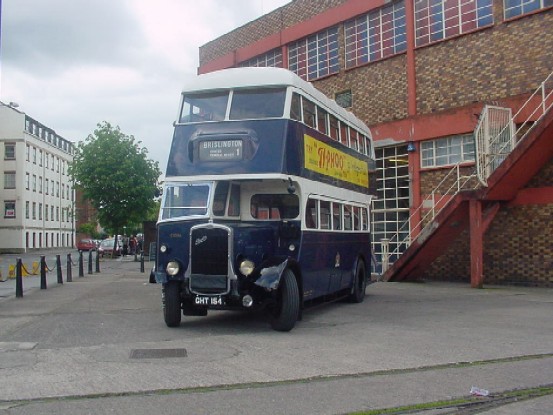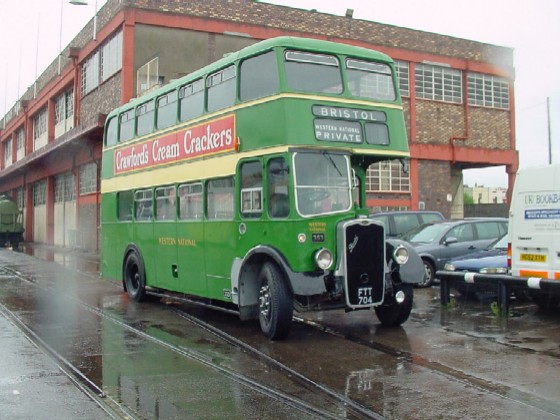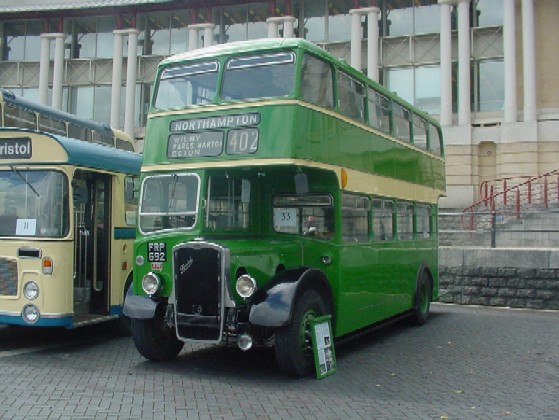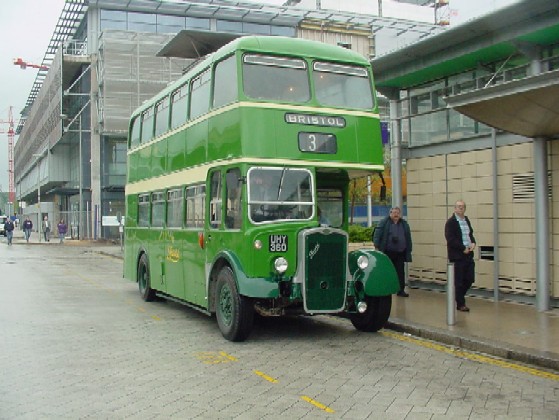
GHT 154
One of the earliest surviving Ks is this 1941 tram-replacement K5G, restored and maintained by the Bristol Vintage Bus Group. It is shown at the Bristol Harbourside heritage event in 2006. The body is the only known surviving example of a Brislington Body Works (BBW) double-deck. It is shown in the old blue and white colours of the Bristol Tramways and Carriage Co. As this vehicle is unique, a shot of the interior is also shown below. Bristol's buses before World War 2 had the nickname "Bristol Blues" and the blue theme extends even to the tinted light bulbs!


FTT 704
This picture shows the appearance of the standard post-WW2 K, with ECW standard height bodywork. This bus was once owned by the Western National OmnibusCo. for whom it carried fleet number 353.

FRP 692
This picture shows former
United Counties fleet No.838. This shows the "Lowbridge"
ECW body - note the flattened roof line - on a KSW chassis. The
projecting dash panel below the driver's windscreen ( carrying the
registration number plate) is a KSW identifying feature though it can be
misleading as some rebodied K-types also had this feature.

OHY 938
A former Bath Services "Lowbridge" KSW, fleet No. L8089. This bus has a long history in preservation, having been originally rescued by Peter Davey, the well-known Bristol historian. It has recently had a make-over and here it is looking resplendent at the Bristol Vintage Bus Group rally in 2005.

UHY 360
The ubiquitous Bristol City ("Joint Services") KSW with "highbridge" ECW body. The Lodekka was not initially meant to be a replacement for the KSW and many Tilling Group companies bought them until 1957. This is fleet No. C8320. A number of C8320's sisters survive in captivity, showing the longevity and robustness for which Bristol was rightly famous.